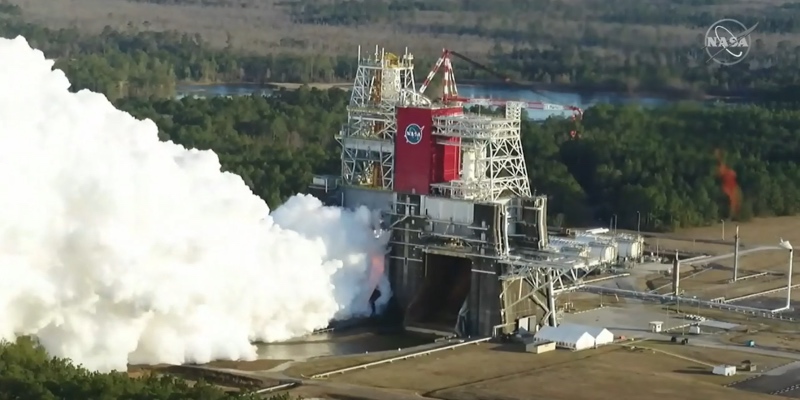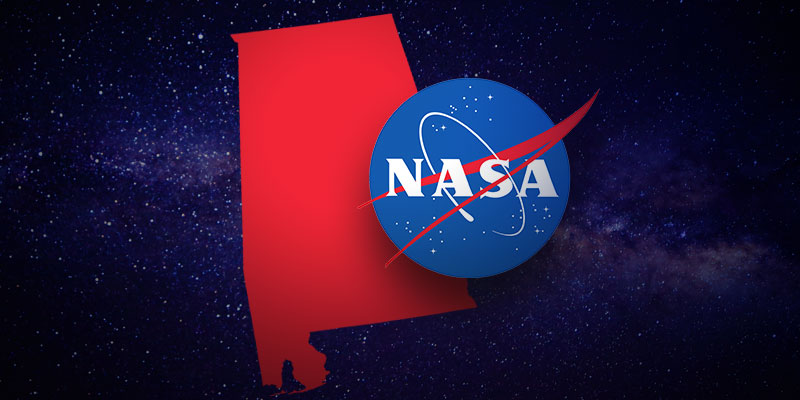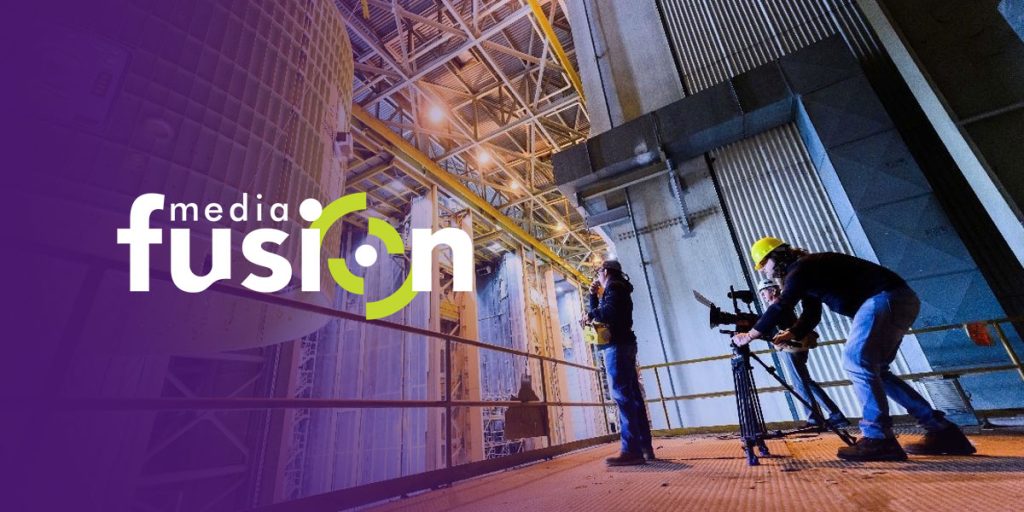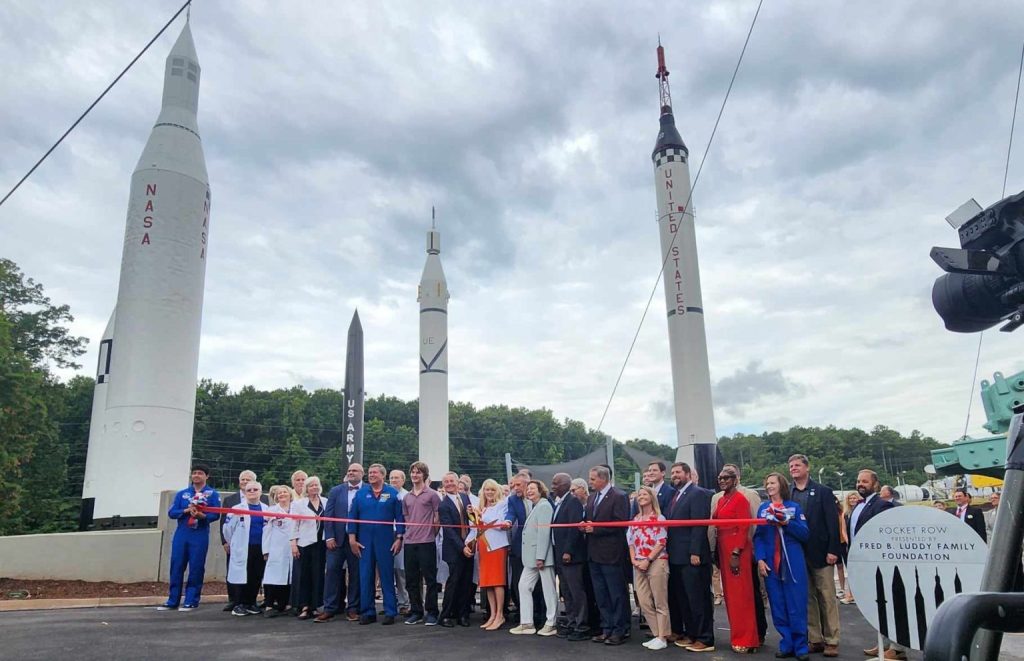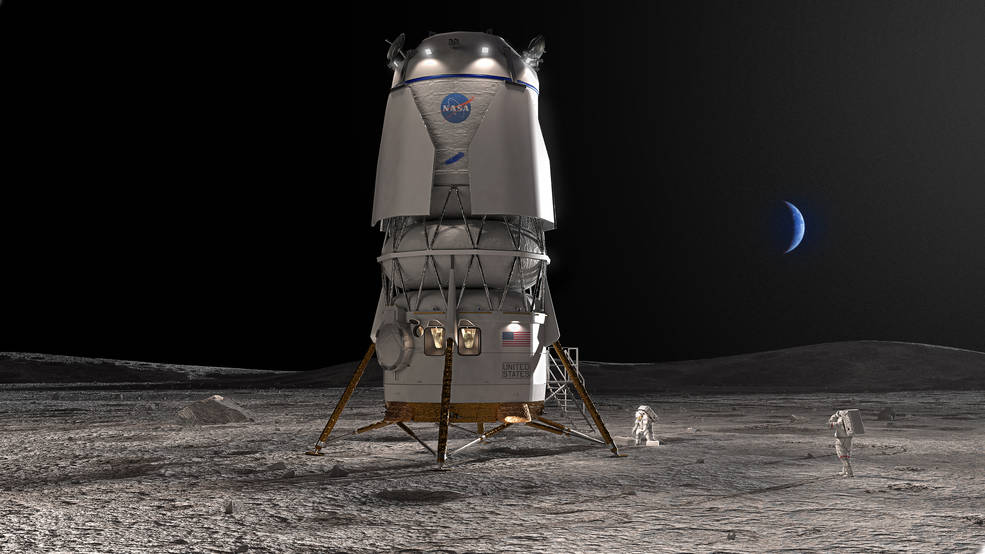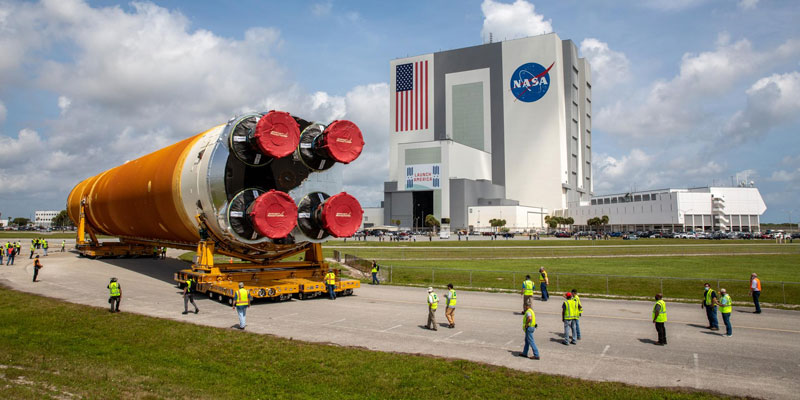NASA on Saturday conducted a hot fire of the core stage for the agency’s Space Launch System (SLS) rocket that is scheduled to launch the Artemis I mission to the moon later this year.
The hot fire was the final test of the eight-part, 12-month Green Run series, conducted at Mississippi’s Stennis Space Center.
SLS is the world’s most powerful ever rocket that will power America’s next-generation moon missions and subsequent crewed missions to Mars. Alabama’s aerospace industry has led the effort to build the SLS, which stands 212 feet high and 27.6 feet in diameter.
Boeing is the core stage lead contractor, and Aerojet Rocketdyne is the RS-25 engines lead contractor. The SLS program is managed out of NASA’s Marshall Space Flight Center in Huntsville, while Boeing’s Huntsville-based Space and Launch division manages the company’s SLS work.
The hot fire test plan called for the rocket’s four RS-25 engines to fire for a little more than eight minutes – the same amount of time it will take to send the rocket to space following launch.
The team successfully completed the countdown and ignited the engines, however the engines shut down a little more than one minute into the hot fire. Teams are assessing the data to determine what caused the early shutdown and will determine a path forward, per a release from NASA.
During the test, the core stage generated 1.6 million pounds of thrust while anchored in the historic B-2 Test Stand. The hot fire included loading 733,000 pounds of liquid oxygen and liquid hydrogen – mirroring the launch countdown procedure.
“Saturday’s test was an important step forward to ensure that the core stage of the SLS rocket is ready for the Artemis I mission, and to carry crew on future missions,” stated NASA Administrator Jim Bridenstine, who attended the test. “Although the engines did not fire for the full duration, the team successfully worked through the countdown, ignited the engines, and gained valuable data to inform our path forward.”
Support teams across the Stennis test complex reportedly provided high-pressure gases to the test stand, delivered all operational electrical power, supplied more than 330,000 gallons of water per minute to protect the test stand flame deflector and ensure the structural integrity of the core stage, and captured data needed to evaluate the core stage performance.
“Seeing all four engines ignite for the first time during the core stage hot fire test was a big milestone for the Space Launch System team” said John Honeycutt, the SLS program manager at Marshall. “We will analyze the data, and what we learned from today’s test will help us plan the right path forward for verifying this new core stage is ready for flight on the Artemis I mission.”
Overall, the hot fire represented a milestone for American space exploration.
“Stennis has not witnessed this level of power since the testing of Saturn V stages in the 1960s,” commented Stennis Center Director Rick Gilbrech. “Stennis is the premier rocket propulsion facility that tested the Saturn V first and second stages that carried humans to the Moon during the Apollo Program, and now, this hot fire is exactly why we test like we fly and fly like we test. We will learn from today’s early shutdown, identify any corrections if needed, and move forward.”
You can watch the hot fire here.
Under the Artemis program, NASA is working to land the first woman and the next man on the moon in 2024 through Artemis III.
Artemis I will be the first integrated flight test of SLS and the Orion spacecraft. This will be an uncrewed test flight. Artemis II is slated to be the first crewed flight for the program.
Sean Ross is the editor of Yellowhammer News. You can follow him on Twitter @sean_yhn




